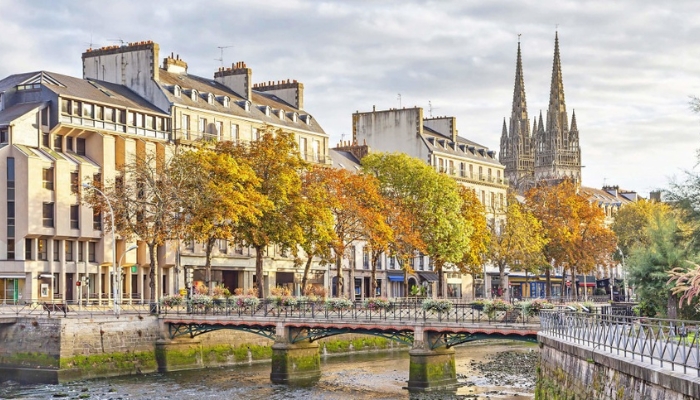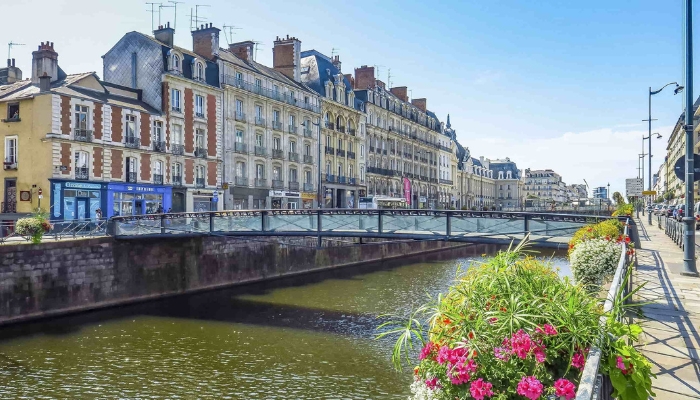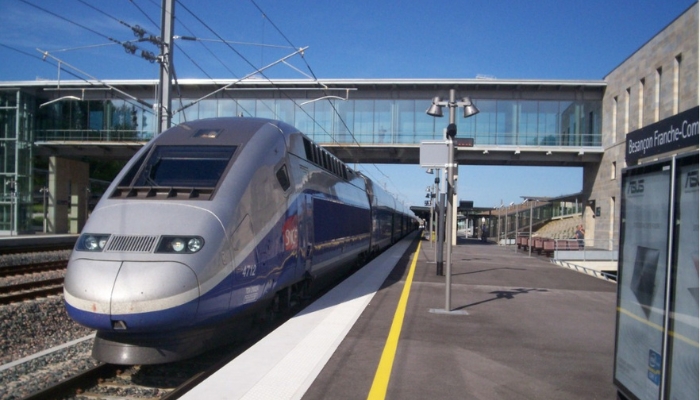
Modern regional trains in Brittany beg you to take in the surroundings from their large windows. The last article in our author’s series examines the route to Finistère
The quick TGV trains are used by many rail tourists to quickly and efficiently traverse large distances in France. High-speed trains, however, frequently avoid the complex landscape structure. However, there are magical moments along these paths as well. The short glimpses of Champagne vineyards between Strasbourg and Paris are something I treasure. Operating for more than 40 years, the high-speed line between Paris and Lyon offers spectacular views of the Morvan massif as it climbs to about 500 metres above sea level, avoiding the dramatic granite landscapes of a less visited area.
High-speed trains are great for getting about quickly, but if you want to see France in a way that’s all its own, you have to take the secondary routes. The nation has a first-rate rural railway network. Southern French region of Occitanie’s tourism bureau won a Rail Tourism Award last year for their aggressive branch line advertising. This project invites travellers to discover the varied scenery that stretches from the Cévennes to the Pyrenees by hopping aboard trains instead of driving their cars.
There’s nothing I can think of more ideal than spending a week travelling throughout Occitanie or another area of France, avoiding the TGVs and sticking strictly to regional trains, which are known as TERs in France and have their own unique regional branding. You’ll cruise across Provence aboard the chic ZOU!, which evokes the beauty of the Riviera. It’s the handy MobiGo in Burgundy and the unique BreizhGo in Brittany.
Nantes to Quimper
My companion and I remark on BreizhGo’s descriptive moniker as we stroll to the Nantes train station for a trip deep into Brittany. Our route passes by the imposing fortifications of the Palace of the Dukes of Brittany, a fortress that formerly ruled the northwest of France for many years. Although Nantes is no longer so much a Breton city as it is a part of the Loire, it is nevertheless a great place to start trains that go to the Atlantic coast of France. My spouse says, “Let’s go to the ends of the Earth today.” “To Finistère.”
Many Parisians have the impression that Finistère is a distant marine outpost with a distinct language and culture, like the edge of the planet
The scenic train rides to Finistère are available from various regional train stations. I have previously taken the northern road to Brest, which crosses a magnificent stone viaduct that defines the streetscape of Morlaix. Today, we’ll take the southern route that goes to Quimper, the capital of Finistère, the westernmost département in France. Far-off Finistère seems, to many Parisians, like an isolated seaside outpost at the edge of the world, with its own language and culture.
We see the ducal palace to the right and the far-off shipyards to the left as we depart Nantes on our BreizhGo-branded TER train. We soon leave the city behind and glide along the right bank of the Loire River, passing through water meadows. The quality and style of TER trains in France varies greatly. With its unique seating configurations, spacious rooms for bikes and strollers, accessible amenities for passengers with mobility issues, and large windows providing panoramic views of the changing Breton countryside, this contemporary train headed for Quimper stands out among the best.
This is better than looking at France via narrow windows from a TGV, in my opinion. But using a TER doesn’t automatically equate to slower travel. TER trains are fast—many of them can reach 70 mph—and some only stop every 20 to 30 minutes. It takes us slightly under three hours to go 160 miles to Quimper, with ten breaks en route.
The best of Brittany

We start in Loire-Atlantique, stop briefly in Ille-et-Vilaine, then go via Morbihan to arrive in Finistère. Our route takes us through four départements. This is an amazing trip that takes us through striking scenic changes as we move westward, from the bucolic Loire valleys to the untamed Brittany region. The wilder side of the ancient Armorican Massif is revealed here, with stunning coasts, deep wooded valleys, and a sense of wilderness at higher levels.
Although some may be disappointed that the route to Quimper does not follow the area’s well-known coastline, there are benefits to the drive, including breathtaking vistas of tidal estuaries, charming stone towns with unusual gabled houses, and the impression that you are travelling through an old countryside.
This column comes to an end today with our trip to Quimper. We appreciate everyone who has supported us thus far
It doesn’t end at Quimper. A little railway goes northward from here to Landerneau, which is 15 miles east of Brest. While the overhead wires terminate at Quimper, this single-track railway runs diesel railcars. Still, Quimper, with its quaint labyrinth of little alleys, is a great spot for us to unwind. It’s a chance to savour cider and crêpes, two hallmarks of Brittany.
Like many of the places this column has featured over the past two years, Quimper emits a sense of being a unique place apart, even though it’s not quite at the edge of the globe. This monthly column has been taking you along Europe’s scenic rural trains for longer than you might remember. We’ve travelled through Finland and Portugal, over the Swiss Alps and Dutch polders, absorbing the spirit of the landscapes and coming across amazing little villages along the way. This column comes to an end today with our trip to Quimper. We appreciate everyone who has come along on this journey with us. No doubt our paths will meet again, somewhere in Europe on a slow train.
Travel facts

There are typically four daily direct TER services operating between Quimper and Nantes. Tickets are available for purchase the day of departure. Take a look at Rail Europe for advance purchasing without costs on sterling transactions. On this route, first-class tickets cost £50, while second-class seats cost £36.6. Interrail passes, which enable flexible travel without seat reservations, are ideally suited for TER trains in France, including this particular route. The starting price for a single-country Interrail pass in France is €144, although global flexi-passes that include 33 countries start at €212.



